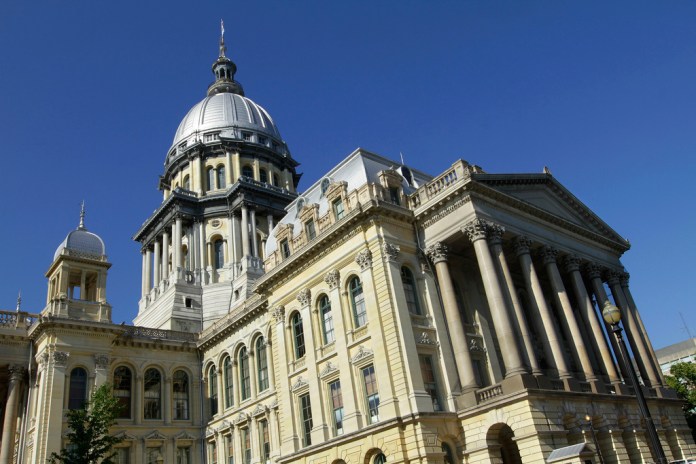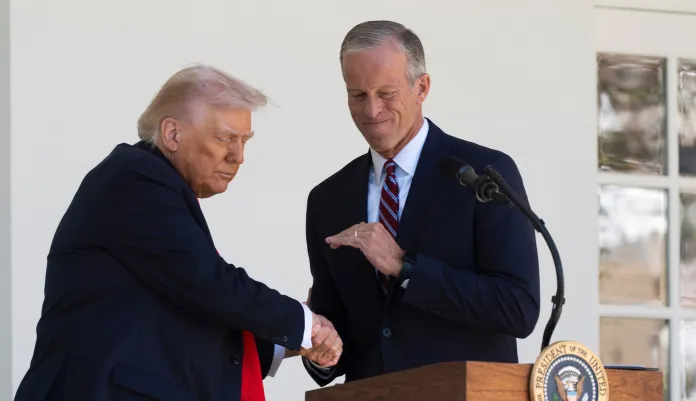‘Big, beautiful bill’ 2.0 could set up fiscal hawks for disappointment
The article discusses Congressional Republicans’ plans to pursue a follow-up to the recently passed “big, stunning bill”-President Donald Trump’s major tax and spending legislation signed into law on July 4. There is talk of a second or even third reconciliation bill aimed at further budget reforms and spending cuts. However, fiscal conservatives remain skeptical that another bill will achieve important reductions, as many potential savings were likely exhausted in the first effort.
House Budget Committee Chairman Jodey Arrington acknowledged there are still some areas for efficiency and waste reduction, but he doubts large-scale cuts are feasible through reconciliation alone. Some Republicans,including Sen. Rand paul and Rep. thomas Massie, who opposed the initial bill, express doubt that the next bill will bring real fiscal restraint without stronger congressional resolve.
House Speaker Mike Johnson is targeting two reconciliation bills before Congress adjourns in 2026, but previous efforts required intense negotiation and White House involvement to pass. Senators like Josh Hawley suggest that the success of another bill depends largely on President Trump’s demands and involvement.
The reconciliation process allows Republicans to pass budget-related laws with a simple Senate majority, bypassing the usual 60-vote threshold. However, the Senate parliamentarian enforces strict rules limiting what can be included, which led to the removal of some key provisions favored by fiscal hawks-such as barring Medicaid funds for gender-transition treatments and denying benefits to illegal immigrants.
Despite these challenges, Republicans are considering reintroducing excluded provisions and pursuing other measures like rescission packages (which undo previously approved spending) to curb the deficit. while there is ambition for a “big,beautiful bill 2.0,” there is significant uncertainty about whether it will deliver the deep fiscal reforms that some conservatives demand.
‘Big, beautiful bill’ 2.0 could set up fiscal hawks for more disappointment
Congressional Republicans are looking to take a second bite of the apple with a ‘big, beautiful bill’ 2.0 in the fall, but fiscal hawks are skeptical that a second bill would provide the steep cuts they are looking for.
President Donald Trump’s major tax and spending bill was signed into law on July 4, and members in both the House and the Senate are already discussing what they could put into a second or even third reconciliation bill. However, fiscal hawks are already signaling doubts over whether another megabill would provide the steep cuts they seek.
House Budget Committee Chairman Jodey Arrington (R-TX), who would play a key role in drafting a second or third bill, said on a call with reporters this week that while he believes there are opportunities to find savings, how much can be cut through reconciliation could be a problem.
“I think there are still reforms that we could include that would save money, that are efficiency related, waste and fraud related, that don’t restructure or cut into the program,” Arrington said.
The chairman continued, “I don’t have a lot of hope that it will be a significant amount of savings, just because I think we maxed out a big chunk of that in this process, that’s why we pushed so hard, but also there are future rescission opportunities, there is this fiscal 2026.
Spending cuts are certain to be a flashpoint in any future reconciliation bill crafted by Republicans. Deficit-leery Republicans pushed heavily for steep cuts to government spending during the first reconciliation battle before reluctantly coming around after many hours of deliberation with the White House.
However, some fiscal hawks aren’t convinced that anything would change with a second bill.
“I’d like to see Congress grow a spine, I’m not so sure that’s going to happen,” Sen. Rand Paul (R-KY) told the Washington Examiner. “What will change things between the last bill and the next bill?”
Paul and fellow Kentuckian Rep. Thomas Massie (R-KY) were among those who did not vote for the first spending bill.
A GOP House lawmaker told the Washington Examiner that the “only reason to have a second reconciliation bill is if we’ll be serious about more spending restraint and reforms.”
House Speaker Mike Johnson (R-LA) said on Fox News Sunday that he was eyeing two reconciliation bills before this session of Congress ends in 2026, one in the fall and one possibly in the spring next year.
Johnson’s ambitious timeline comes after GOP leadership in both chambers had to expend significant political capital and time to get members on board for the first megabill, even calling in the White House to get it over the finish line.
The president and his aides played a major role in getting the original legislation across the finish line, holding many meetings with holdouts from both sides of the conference. Trump made calls to Capitol Hill throughout the process, and aides remained at the Capitol for many hours leading up to final passage.
Sen. Josh Hawley (R-MO) said another budget bill would hinge on what the White House wants.
“So, if the president wants one, he has something definite that he wants to do with it, then maybe. But I think it really depends on him, otherwise I doubt it, Hawley said. “If the president doesn’t say ‘I want this’ and ‘here’s what I want in it,’ then I kind of have a hard time seeing it.”
Reconciliation is a budget process that allows the GOP to quickly implement President Donald Trump’s policies on taxes, the border, and national security by bypassing the Senate’s 60-vote threshold by passing the bill with a simple majority.
Since Trump took office, GOP leadership in both chambers has been working closely with members of their caucus to ensure passage of the bill. Conservatives concerned about spending put up a fight on key areas such as Medicaid cuts before they reluctantly came around after many hours of deliberating with the White House.
“I think we stretched this rubber band pretty tight between moderates and conservative budget hawks, there will be opportunities in the future, at least two that I can think of, to have another reconciliation item,” Arrington said.
A second reconciliation process would likely need to include major cuts, which may not be feasible, to get the right flank of the party on board.
Sen. John Curtis (R-UT) told the Washington Examiner he is “in the camp of we need to do less spending” if a second bill comes to fruition. While agreeing with Arrington on the first process, “while it was stretched thin, I think everybody feels good about the bill.”
Even after the passage of the One Big Beautiful Bill Act, the deficit is still a major concern for these members.
“I would like to look at more reductions in spending and look at more changes to the tax code,” Sen. John Kennedy (R-LA) told the Washington Examiner. “And I would like to see us try to draft a bill this time that, to the greatest extent possible, is something that reflects sound policy, as opposed to bribes to members of Congress to vote for something.”
“Here’s one of the things I learned in the last reconciliation. In the real world, pigs get fat and hogs get slaughtered. Except in the United States Senate, pigs just get fatter,” he said.
Arrington lined up some items that he could see being considered in this second bill, even though he doesn’t see large opportunities for cuts, citing certain removed provisions.
“There were a few things that come to mind, but there may be a longer list of things that were kicked out by the Senate parliamentarian as a noncompliant rule,” he said.
Through this budget process, the Senate parliamentarian reviews the bill line by line to remove provisions extraneous to the budget process to abide by a reconciliation requirement known as the Byrd Rule. The process stripped many provisions popular among fiscal hawks, but many key GOP provisions remained, such as work requirements for able-bodied Medicaid recipients.
While the Senate worked to configure language to preserve the original provisions, many of them were stripped from the bill. Arrington remained confident that they could work to restore more priorities left out by the Byrd Rule.
The budget chairman cited two key Medicaid provisions that were stripped from the bill, the banning of the use of Medicaid funds for gender-transition treatments for minors and adults, and barring illegal immigrants from qualifying for benefits, as examples.
“I think we should make another run at that and look for ways to structure the provisions, so that they are more fundamentally budgetary and impacted policy, and I suspect that’s why they were kicked out,” Arrington said.
DEMOCRATS AND REPUBLICANS RACE TO DEFINE THE ‘BIG, BEAUTIFUL BILL’ TO VOTERS
Meanwhile, some members are looking for savings through other facets, noting that if a second reconciliation bill is in the cards, there would need to be a large clawback on spending.
Possible options could include executive action and rescission packages. A rescission bill is a proposal by the president to rescind previously appropriated funding.
Rachel Schilke contributed to the article.
" Conservative News Daily does not always share or support the views and opinions expressed here; they are just those of the writer."




